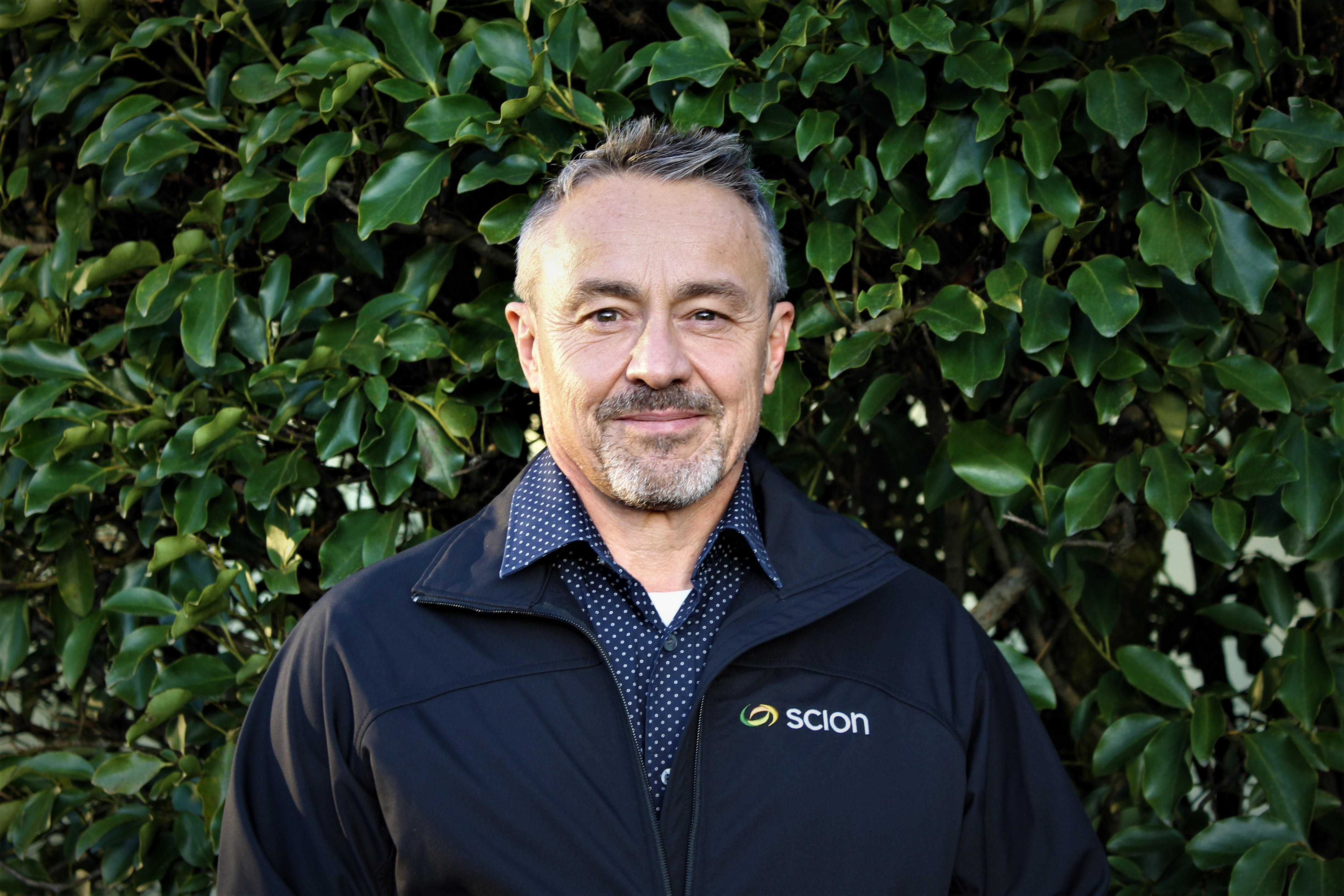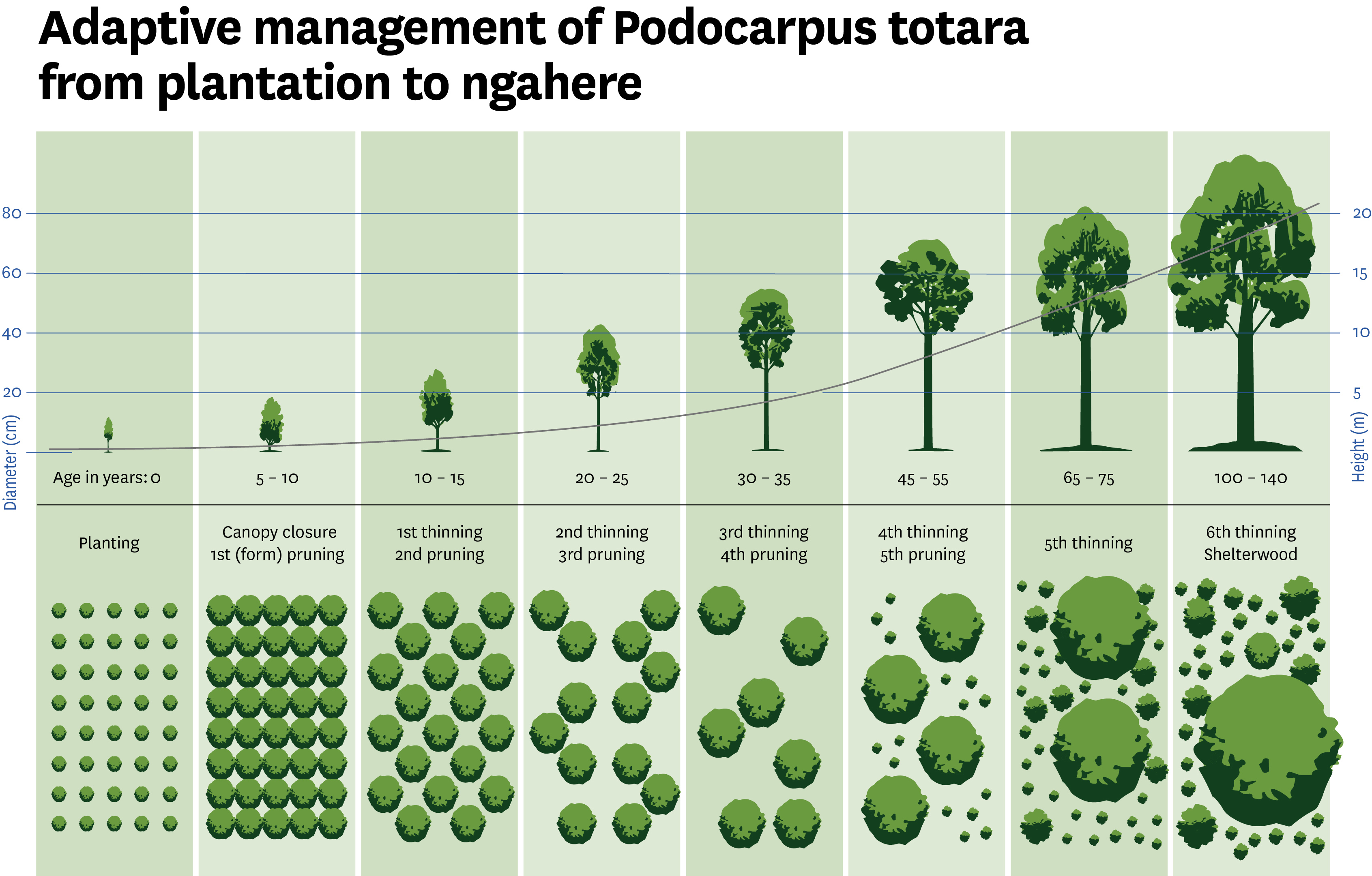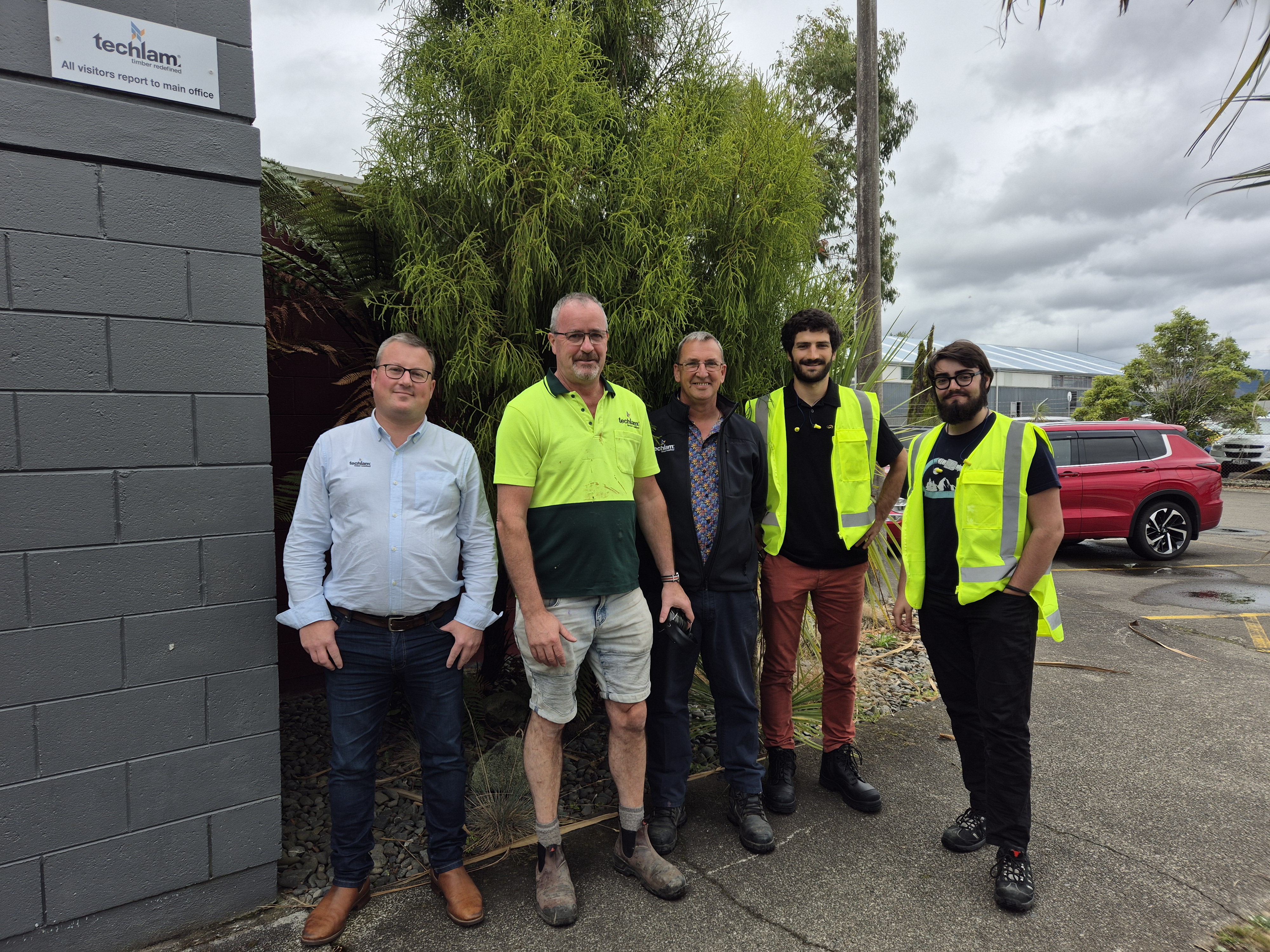What's new at Scion No. 4
Kia ora and welcome to the latest issue of What’s New at Scion – the final before Christmas.
In today’s edition, you can read two editorials, and about some of our research:
I encourage you to reach out to the key contact person in each story or connect with me directly either now or in the new year. As we farewell 2024, we would like to wish all our clients, partners and colleagues the very best for the festive season.
One thing we’re celebrating is three of our MBIE Endeavour projects being awarded gold ratings in the latest reporting round. The golds were for our Extreme Wildfire, Vive la résistance and Forest Flows research programmes. A gold star means a contract has exceeded contractual obligations and is likely to increase the impact of the project.
Our offices will be closed from Friday 20 December and re-open on Monday 6 January 2025. We look forward to working with everyone in 2025.
Ngā mihi,
Henri
Innovation among change
Editorial by Henri Bailleres
The current state of our forestry sector brings to mind the motto “Mobilis in Mobili” - movement within a moving element.
The forestry landscape is dynamically evolving under pressure from environmental and social challenges such as climate and biosecurity risks, technological innovation, scientific transformation and potential systemic reforms.
The government is progressing plans to significantly reform New Zealand’s science and innovation system. While Scion could be quite a different organisation, the work we do to help grow value from the forestry and wood processing sector remains essential. Industry partnerships will also continue to be key to growing value from science and innovation and protecting New Zealand’s forests.
At Scion, our research is helping future proof for a changing climate. Our Forest Flows research programme aimed to develop a forest hydrology model to predict water use, retention and release. We’re working to develop a predictive Red Needle Cast model for forest managers as part of the Resilient Forests research programme. Protecting Aotearoa from Wind-Dispersed Pests aims to develop a way to forecast when airborne pests are more likely to travel to Aotearoa.
Through strategic partnerships, research and a commitment to sustainable practices, we will navigate change, ensuring our forests remain healthy, productive and vital to our communities. Our partnership with Forest Growers Research exemplifies this and our work with forestry companies, technology partners and research institutions shows we can make an impact when diverse expertise converges.
With forestry industry partners, we’ve developed an AI-driven tool to automate forest inventory data collected from satellite images. The Precision Silviculture programme leverages advanced technology to transform traditional forestry practices. The FGR-led Tissue Culture research programme uses AI and advanced robotics to accelerate development and propagation of genetic resources for our plantation forests.
Our continued interaction with industry will provide direction to benefit New Zealand. It will also help make knowledge accessible, enable smaller forest owners to access insights and support national goals such as diversifying our forest composition. Scion is not just observing the future of forestry — we are actively shaping it.

Strategic research partnership
Editorial by Alison Slade, Innovation manager at Forest Growers Research.
Research allows us to expand our understanding of the world around us—to drive progress. But the ability to carry out research relevant to the primary sector, the engine room of New Zealand’s economy, is becoming increasingly difficult. Particularly in forestry. With shrinking funding opportunities, continued delays in science reforms, and increased opportunities in Australia, our forest growing research capability has never been under greater threat.
Forest Growers Research (FGR) and Scion are working in partnership to sustain forest growing science infrastructure for the country. This partnership is more than just a working relationship—it is a critical alliance in times of significant uncertainty.
FGR functions as a knowledge broker for the forestry sector, establishing and maintaining key industry connections. Its primary role involves identifying research needs, and facilitating the funding and two-way transfer of knowledge between researchers, practitioners and decision makers.
Spanning the value chain from forest establishment to product delivery, Scion is the primary science provider to the sector.
Funding leverage is a critical component of the partnership. By strategic leveraging of the Harvested Wood Material levy funding and the Strategic Science Investment Fund, FGR and Scion work together to maximise research value and return on investment. This approach ensures targeted and relevant research with practical outcomes, ensuring that the forestry industry continues to have access to the critical research it needs.
With continued investment and commitment from both government and industry stakeholders, our partnership will help ensure that New Zealand’s forestry sector remains resilient, sustainable and profitable.

Tissue Culture: The Future of Forestry
A new robot prototype developed in Finland for sorting somatic embryos of Norway spruce has arrived in New Zealand to be tested with radiata pine.
Housed at Scion and owned by Forest Growers Research it could streamline propagation to make it more consistent and precise while opening the door for AI to predict embryo success during germination.
The robot was obtained as part of the FGR-led Tissue Culture Techniques for the 21st Century Forests programme. FGR and Scion are in the process of signing a formal partnership agreement with the Natural Resources Institute Finland (Luke) and the South-Eastern Finland University of Applied Sciences (Xamk). Xamk and Luke developed the robot together.
It uses automated image capturing using machine learning and artificial intelligence to determine if an embryo should be selected or rejected.
This aligns with programme goals of creating a reliable and rapid propagation method to boost productivity and ensure consistent results.
Commercialising the robot and expanding its use to other species is under preparation.
Increasing the uptake of high-quality clonal varietals to 40% of the current commercial forest would add another $1 billion to $1.3 billion per annum to the value of the New Zealand commercial forest growing sector.
Learn more about the tissue culture robot and the Tissue Culture Programme.The programme was funded for seven years in 2019 by FGLT, MBIE and SSIF.

Exploring diverse species for wood supply and products
Scion has an increasing focus on species diversity in our research over the last decade, to provide alternatives to the dominance of radiata pine. These alternatives are needed to mitigate increasing risks of a changing climate and evaluating opportunities for wider product options.
Scion’s research has focussed on Cypresses, Redwoods and Eucalypts. The research on the growing and deployment of these alternative species includes stimulating redwood flower development to increase availability of improved seed, evaluating new Cypress hybrids and Cypress clones for improved heartwood and canker tolerance, and developing a deeper understanding of how species choices are made for small woodlots on farms. Being able to scale up the growing of alternative species in our nurseries, addressing key pain points (insufficient seed, disease risk, gaps in data for decision-making) for deployment will increase establishment of these alternative species.
Once we have secured wood supply from these alternative species, we need products and markets for them. Our research has focussed on developing product options that complement the properties of these alternative species. Thermal modification is an accessible technology for improving wood properties such as durability. So far, we have modified a range of species, with some promising results. Previous work under the Specialty Wood Products Partnership led to the construction of a demonstration cabin to showcase unmodified and modified cypresses, poplar, and eucalypts.
Contact Toby Stovold for more information on growing diverse species, or Rosie Sargent about new product development opportunities.

Low-risk native timber plantations for the future
The ongoing trend for human-caused climate change leading to more extreme weather events increased in frequency and intensity raises the call for more climate-resilient alternative timber species and management practices.
While Scion is investigating the potential of alternative exotic tree species, we also have a promising native tree species that is found throughout New Zealand and that can tolerate a wide range of growing conditions – Podocarpus totara.
For 120 years, tōtara has been the most important native timber plantation species in New Zealand. It can easily be propagated from seed or cuttings and has superior wood properties, natural durability and machining qualities. Due to its extensive natural range from lowland to montane and lower subalpine forest, it can be the perfect low-risk climate-adjust native timber plantation species.
To enable forest growers to confidently choose tōtara as an alternative native plantation species in light of climate change and to de-risk the success of their native plantations, Scion’s Indigenous Forest Scientist Dr Christian Roschak has developed an Adaptive Management Strategy that aims to improve the sustainable production of high-value tōtara timber.
This is in line with a phased six-year-programme around the long-term management of planted tōtara for high-value timber that Scion will initiate in 2025. Important questions that will be addressed are around seed sourcing (performance of different provenances), establishment (spacing, species mixtures), silvicultural treatment (timing and intensity of pruning and thinning) and natural regeneration.

Connecting talent with industry
A technical challenge presented by New Zealand’s premium glulam manufacturer, Techlam, has led to an exciting partnership with Scion, fostering a unique international collaboration.
This collaboration is a model Scion plans to replicate with other companies, furthering industry innovation and strengthening global connections.
In response to Techlam's request for expertise, Scion proposed an innovative solution: inviting Jean Margerie, a student from France’s prestigious engineering school École nationale supérieure d'Arts et Métiers (ENSAM), to join the project on a six-month joint internship.
Jean joined Scion in February 2024 to support Techlam's efforts in improving quality control for glulam beams. He split his time between research at Scion and hands-on work at Techlam.
Techlam Managing Director Brett Hamilton describes the partnership with Scion and ENSAM as "transformative."
"Jean tackled our most pressing challenges and contributed to research and development, driving improvements in both product quality and innovation in glulam manufacturing," he explains.
For Jean, the internship was the final piece in completing his studies in engineering.
While Jean’s internship concluded in August, he continued his work at Techlam as an employee for three additional months and is looking towards a new position starting next year, working alongside both Scion and Techlam.

